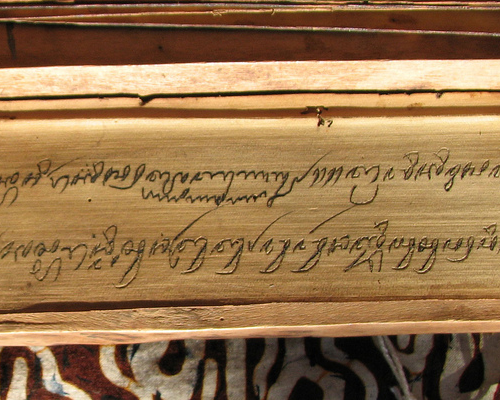Ancient Balinese scripts are incised with a sharp knife on both sides of lontar palm leaves that are then blackened with soot. The leaves are held and linked together by a string that passes through the central holes and knotted at the outer ends.
Today, many young people cannot read lontar inscriptions like this:

Several experts, worried “that the knowledge and wisdom contained in lontar inscriptions will go nowhere” once those leaves deteriorate or are lost, are working to photograh the entire lontar script collection of the library of Bali Cultural office, translate it to Balinese, Indonesian and English and put everything online.
Why is this important? Because, as Alberto Barrionuevo puts it when reviewing my file formats seminar: “Historically a culture has been little more than nothing without its documents. The end of a civilization has been based usually in the destruction of its written knowledge”.
This digitalisation is something that every culture should do as soon as possible, to preserve its heritage. Not only with pre-computer documents, but also (especially?) with digital ones that can go lost much faster, and in many cases already are, than their paper ancestors.
More detail on this wonderful Balinese initiative are available in Ancient lontar manuscripts go digital and US scholar brings ancient Balinese scripts to digital age. To know more about why and how this is already a general huge problem worldwide, you may want to read my NON-technical seminar and articles on file formats.
